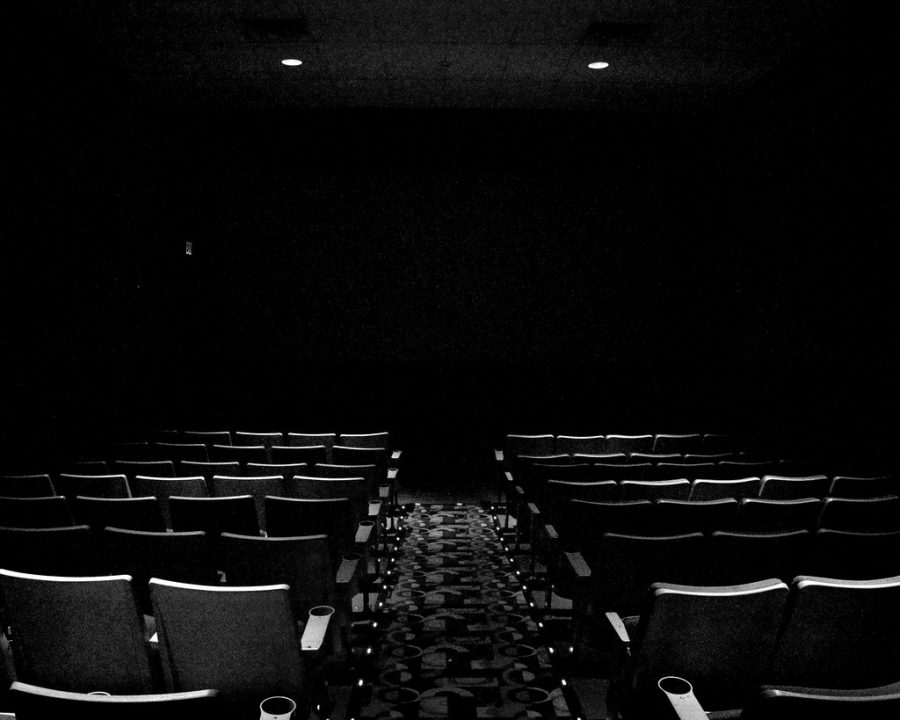COVID-19 forces movie theater industry into fight for survival
“Movie Theater” by roeyahram is licensed under CC BY-NC-ND 2.0
COVID-19 provides a new challenge for movie theaters around the country to stay open.
November 19, 2020
“Tenet” was supposed to jumpstart an entire multi-billion dollar industry.
Director Christopher Nolan’s highly anticipated science-fiction action film, featuring his signature blend of visionary effects and reality-bending storytelling, was supposed to relaunch the movie industry, which the COVID-19 pandemic almost completely shuttered.
But it turned out to be more of a sputter than a spark. The $200 million film’s September opening grossed a mere $20 million in its first weekend. While its domestic box office has since more than doubled to $50 million and its global box office over $280 million, the domestic numbers are an ominous sign for studios, cinemas and would-be moviegoers.
As soon as the film’s initial profit was counted, major movie studios reacted by shelving plans for any further 2020 blockbuster releases deep into next year. The move accelerated an already-established sense of dread about the future of moviegoing.
The movie exhibition industry has been one of the sectors hit hardest by the COVID-19 pandemic and one of the slowest to begin rebounding. Restrictions on capacity, limited releases and outright closures have sent exhibitors scrambling, just as streaming wars between media companies like NBCUniversal and Disney pick up steam.
While restaurants, churches, bars, museums and even some sports games have reopened to the public, movie theaters have fared much differently. Streaming has made content-consumption simple, cutting out theaters as the middle-man. Also, capacity and concession restrictions have severely limited profits, especially in cities like Boston, where concessions are not permitted, yet indoor dining remains allowed. Some experts think full recovery is impossible.
“It is, and will continue to be, absolutely devastating to the movie exhibition industry,” said Brandon Jones, president and chief marketing officer of FilmFrog Marketing, a Dallas-based movie theater exhibition marketing agency. “I predict only 70 percent of existing U.S. theaters will be around a year from now. But, I think it’s going to be the best 70 percent. The theaters that were poorly operated or were in a bad market just won’t last.”
There is almost no question that the effects of the pandemic will force some theaters to close. However, Jones said significant changes to theaters were bound to come anyway. In our consumer society, convenience is critical. Jones predicts that theaters with uncomfortable seating, the same old unhealthy food options and low-quality projectors and sound will no longer attract increasingly picky consumers.
Jones explained that people want to be able to select theater seats and pre-order food from their mobile phones before they arrive at the theater. Cushioned, reclining seats, robust sound and 4K digital projections are a must for people who instead could spend their money on iTunes at home.
The demand for advancements in moviegoing has been long developing, but the pandemic accelerated its arrival. Theaters were already struggling to survive the power of ever-growing movie studios.
“Studios have gotten bigger and more powerful, and more greedy, and started to take 65 percent of a ticket [when they used to split it 50 percent with the theater],” said Luke Parker Bowles, co-founder and managing director of Bellevue Enterprises, a community-based movie theater operating group in Montclair, New Jersey. “Theaters were depending on massively overpriced popcorn and Coca-Cola, and now that just is not a business model at all. Now if people are going to spend the money, they want to spend it on decent food and a real drink.”
Right now, however, many theaters are struggling just to hire enough employees to serve the usual popcorn and soda.
“The movie theaters have almost been positioned as a dangerous place to go,” Jones said. “The reality is, and the epidemiologists would say, they are safer than anywhere else. You are sitting in a seat, you are isolated, your face is pointed forward and you don’t move around. If you have a mask and are socially distanced, going to the movies should feel like going to dinner or going on a plane.”
The recent news that AMC is renting out theaters to small groups for just $99 exemplifies the changes that theaters are beginning to make as they struggle to survive the rapidly shifting environment.
“Disney no longer assumes that when they make a movie, they are going to be releasing it in a theater, and they account for a huge amount of the yearly box office gross. That’s extremely damaging to theaters, especially chains like AMC and Regal,” said Eric Sloss, the head of sales at Cinetic Media, a film financing and distribution company behind Best Picture winners like “Parasite” and “Moonlight.”
On Oct. 12, Disney announced a “strategic reorganization” to accelerate its streaming business after its successful release of “Mulan” exclusively on Disney. This move prompted similar declarations of structural shake-ups throughout the industry. Media giant ViacomCBS announced a similar move for its rebranded streaming service, Paramount Plus, just days later.
The conditions to break records are gone, and the age of 90-day theatrical exclusive studio releases — when a movie is only shown in theaters before any other platform — might be behind us, Jones said.
There may be a silver lining, though.
Smaller studios, independent filmmakers, local filmmakers and alternative content will now have the unique opportunity to get into theaters, Jones said.
Sloss adds that this development particularly opens the door for documentary filmmakers.
“The types of content that can be made, and subsequently the types of content that are getting bought, has changed and narrowed,” Sloss said. “It’s mostly documentaries now because scripted narrative production requires a lot more people to be on set, and it’s been much more difficult to get up and running during COVID.”
Streaming platforms have become the biggest purchasers of this content since theatrical distribution has all but dried up. Competition between platforms to purchase content is at an all-time high, and a new competitor seems to pop up every few months. An end to the continued success of streaming is nowhere in sight.
“Three years ago, the highest I had ever sold a documentary for was $6 million,” Sloss said. “In the last three weeks, I have sold three documentary series for over $13 million dollars.”
Jones explained that to get large numbers of people back in theater seats, not only do certain blockbuster films have to be shown, but behind-the-scenes bonus content has to be advertised and displayed exclusively in theaters. Digital thank-yous from directors should be presented before a movie starts. Viewers, who would typically go to sites like YouTube for that content, need to be attracted by theaters’ “magical” exclusivity.
Creating moviegoing momentum is also vital for the return to theaters. “Tenet” couldn’t be the movie that brought Americans back because frankly, it was not a movie that appealed to everybody.
“I don’t want people to think that ‘Tenet’ was a movie that every moviegoer should come out for. It’s not Kevin Hart up there, or Dwayne Johnson,” Jones said.
On top of that, “Tenet” was released in a deserted domestic movie environment.
“We have to create the individualized behavior of going to the movies once a month, or every couple of months,” Jones said. “To restart going to the movies, that’s a four- to six-month process. One film on one weekend isn’t going to do that, there has to be a cycle, and that just isn’t there right now.”







